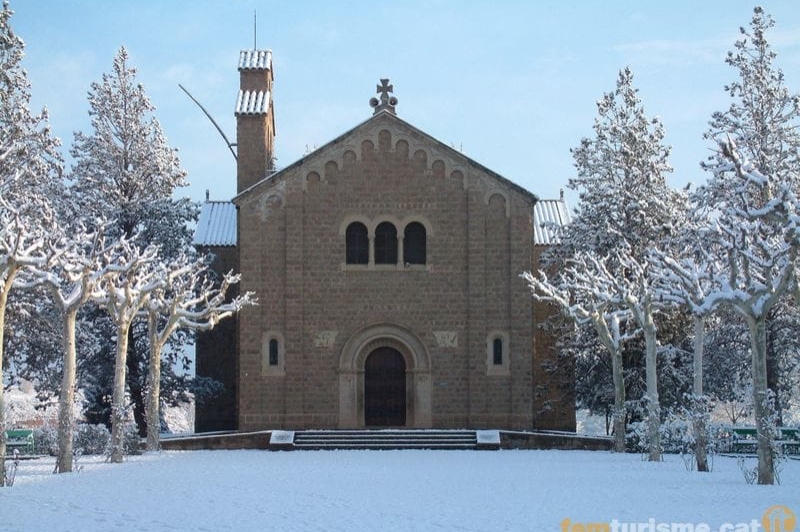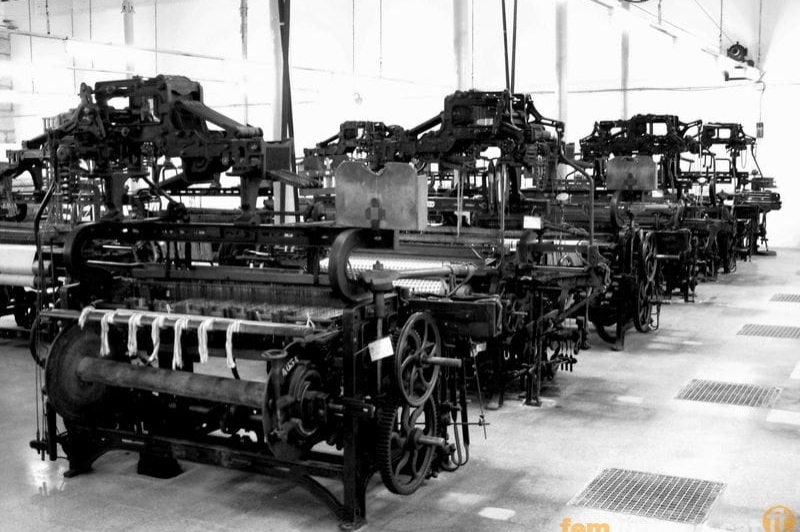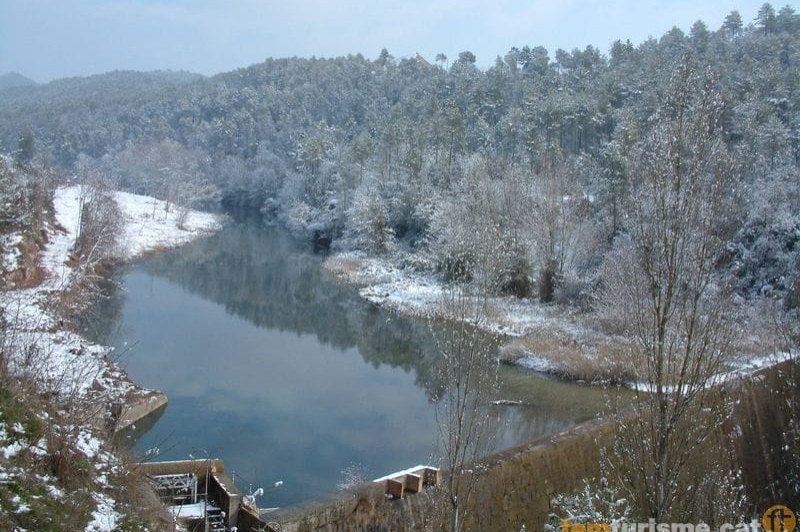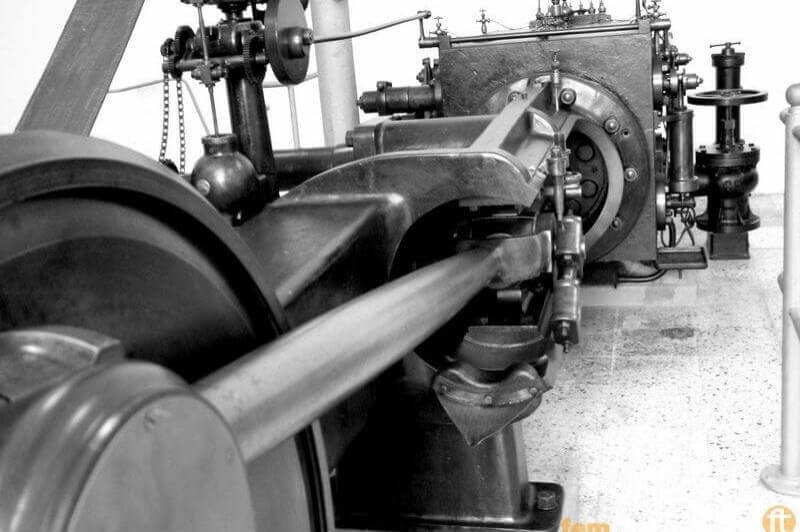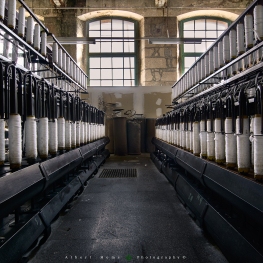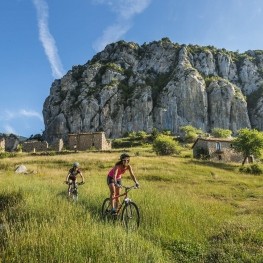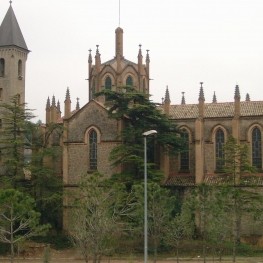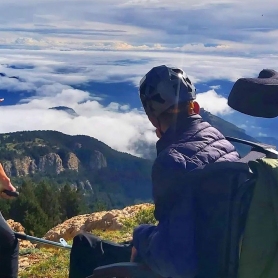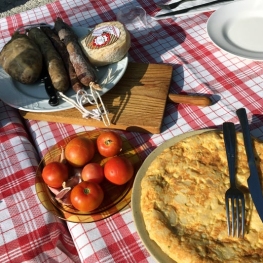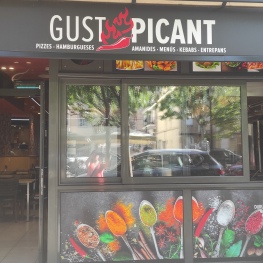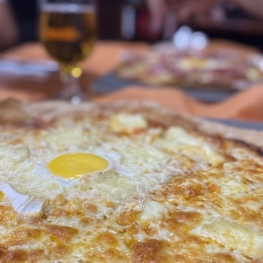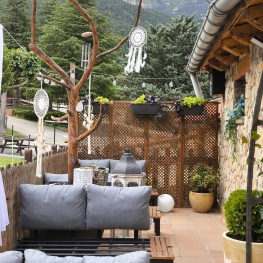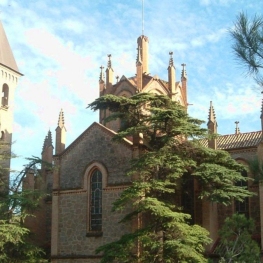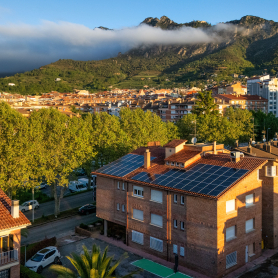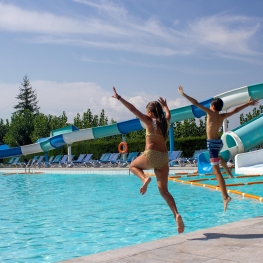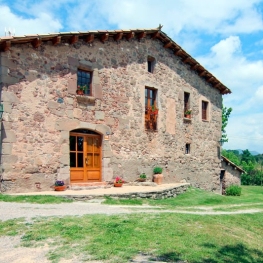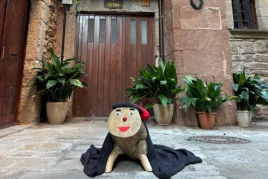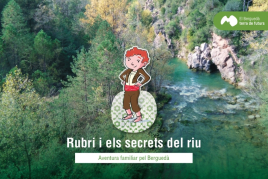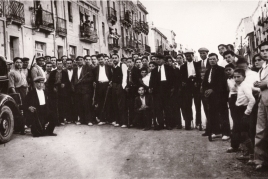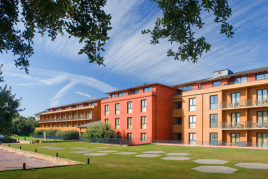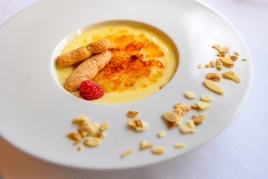Puig-reig
Puig-reig is a municipality in the Berguedà region, located on a hill next to the Llobregat river. Its name means "great mountain".
The municipal term of Puig-reig is formed, in addition to Puig-reig, by 7 more population centers: Ametlla de Merola, Cal Marçal, Cal Riera, Colonia Pons, Colonia Vidal, Cal Casas and Cal Prat. All these nuclei have their origin in the textile colonies that were established along the Llobregat river during the 19th century. A clear example is Colonia Vidal, the last textile colony built in Berguedà, and which today has become an interesting museum where you can find out what life was like in a colony 100 years ago.
If we go into the town we can see the Puig-reig castle, an important fortress in the county of Berga, dating from the year 907, and which during the 12th century was the residence of Guillem de Berguedà. Also noteworthy is the church of Sant Martí, from the 12th century, with a single nave covered with a barrel vault and a semicircular apse. On the outskirts of the town we find the Periques bridge, a late 13th century Gothic bridge built over the Llobregat.
The textile colonies
The Ametlla de Merola
It is probably the best known textile colony in all of Catalonia. Since it was founded in 1876, the history of its owners, the Serra Feliu, originally from Vilassar de Mar, and its inhabitants and workers from the colony has merged in a very special way: it is the Ametlla and they are the Ametllans.
The importance of the company, the urban structure of the neighborhood and its dimensions mean that a good part of its cultural and festive activities and its own signs of identity are still alive. The textile activity is also maintained in the old and modern warehouses of the manufacturing complex.
Cal Riera
Documented since 1890, the factory was built taking advantage of the waterfall of the old Casa Grande de Cal Riera flour mill, which gave it its name, although for many years it was also known by the name of Cal Manent, one of the main shareholders of factory.
Its owners, a company name made up of different partners: Manent, Massana, Vilaseca and Llibre, promoted the construction of the colony, of which the tower and the factory itself stand out in particular. The houses, built at different times, respond to the multi-family housing model.
Cal Riera was the first factory and neighborhood affected by the textile crisis, and it closed its doors in 1980, but today the factory continues to work, dedicating itself to the production of cotton spinning.
The colony of Cal Marçal
The Torras, manufacturers from Manresa and cousins of the Pons, bought the land of the Cal Marçal farmhouse in 1880 with the aim of building a factory and a textile colony, which initially only included a long street made up of multi-family homes.
The factory and the small colony were acquired in 1915 by the Pons, who sold it in 1929 to Viladomiu. It was from this date that, thanks to Viladomiu, the factory and the colony experienced significant growth: new houses were built at the foot of the road and also the Colonia church. Prosperity also made the Cal Marçal neighborhood grow, at the foot of the road and next to the neighborhood.
The Cal Vidal neighborhood
It is the last textile colony built in Berguedà, and it is probably for this reason that Cal Vidal stands out especially for its orderly, rational and modern urbanism, and for the existence of one of the most impressive waterfalls in the region, attractions of this colony located at the foot of the road and that today can be visited as a museum.
The factory was launched in 1901 and since then, the Vidals projected its growth and promoted the services of the workers who lived and which today can be seen thanks to the Museum: Fundación Vicenç Vidal Casacuberta, Cinema, Casal de la Dona, Church, etc.
The Cal Casas neighborhood
It is the least known textile colony in the Berguedà region, because it was one of the first to suffer the textile crisis in 1968, and because the town's urban growth has partially absorbed it.
The first factory was nothing more than a small spinning mill that used the old Puig-reig flour mill since 1870. Different social reasons, with industrialists from Sallen and Berguedans, made it work until Llorenç Mata i Pons it became a large spinning mill. Mata i Pons was one of the great wholesale cotton merchants in our country, and owner of other factories scattered throughout Catalonia.
The factory halls today house new and enterprising industrial activities in the shadow of the old tower; Cal Casas houses, a solid stone construction, form one of the most outstanding complexes on Llobregat street in our town.
The Cal Prat neighborhood
Originally from Sallent, where since the 18th century they had been engaged in manufacturing activities -first in a copper forge and later in the manufacture of woolen and cotton yarns and fabrics- they began the construction works of the Puig-reig factory in the year 1871.
It was a large floor factory dedicated to cotton spinning and weaving in whose environment the spaces and buildings of the colony were also designed.
In Puig-reig, Els Prats they found cheap land and above all abundant water from the Llobregat, that is, free energy for their factory. They founded a family business and a large neighborhood with housing and services for the workers who lived and worked. Among the sets of buildings, apart from the factory, the tower of the masters and the church stand out.
The Cal Pons colony
Founded in 1875 by the Pons family from Manresa, it is probably the most interesting textile colony in Catalonia from a monumental point of view.
Two towers stand out, the director's chalet, a magnificent neo-Gothic church, the house-convent of the nuns, and a remarkable set of gardens and forest, in addition to the characteristic multi-family homes.
The colony was built between 1875 and 1920, the years of maximum economic growth and the special political and economic role of its owners. Lluís G. Pons i Enrich, industrialist and politician, was one of the greatest defenders of industrial paternalism.
The factory, dedicated to the production of cotton yarns and fabrics, expanded its production with the manufacture of towels in the sixties, becoming the main activity until its closure in 1992.
visits every month
Visits to the castle, temple headquarters and tower of Merola
Founded in the count's time, probably at the end of the 9th century, the castle of Puig-reig was chosen by the viscount and troubadour Guillem de Berguedà to locate his residence. In his will, in 1196 he left a large part of his estate to the Order of the Temple, and they turned Puig-reig into one of the few commanderies in old Catalonia. A visit to the Romanesque church of Sant Martí and the castle of Puig-reig allows us to grasp the importance that this place had during the Middle Ages.
Agreed hours. Consult on the web.
Cal Pons Interpretation Center
Declared a cultural asset of national interest in 2017, the monumental complex of the Pons neighborhood represents one of the best preserved examples of industrial urbanism from the late 19th century. The visit to the interpretation center located in the neo-Gothic church of Sant Josep and the subsequent walk through the grove of the neighborhood allow the visitor to delve into the heyday of the Catalan textile industry and meet its main protagonists.
Agreed hours. Consult on the web.
Cultural route of L'Ametlla de Merola
La Ametlla de Merola is one of the few colonies that remains a true population center with its own character and, in this case, with an outstanding cultural dynamism. The visitor can stroll through its streets and squares and discover the history of this colony thanks to the explanatory panels that will accompany them throughout the tour.
Agreed hours. Consult on the web.
Vidal Colony Museum
The Vidal neighborhood museum, founded in 1995, is today one of the main tourist attractions in the region. Guided tours allow you to discover the most emblematic spaces of what was the last colony founded in Berguedà and learn about the daily life of its workers as well as the working conditions in the factory where the technical process of transforming cotton into fabric is explained.
Consult on the web.
Discover the underground currents of Puig-Reig
Since ancient times, most constructions have been carried out taking into account groundwater currents. This knowledge has been applied to towns and cities, whether in the construction of bridges, locks, churches, factories and public buildings. These currents, apart from influencing buildings, also greatly influence people and their daily lives, even if we are not aware of it.
Agreed hours. Consult on the web.
What to do
Museu de la colònia Vidal de Puig-Reig
Puig-reigA visit to the Colonia Vidal de Puig-reig allows us to understand…
Centre d'interpretació de l'Església de Cal Pons
Puig-reigThe Interpretation Center of the Colonia Pons Church, through three museum spaces,…
Guies d'Arrel
Berga (a 14.6 Km)Guías d'Arrel is a company dedicated to providing support to nature, with…
Where to eat
Hostal de Montclar
Montclar (a 10.8 Km)Located in the town square of Montclar, in the south of Berguedà,…
Restaurant Gust Picant
Berga (a 14.7 Km)At Gust Picant, you can enjoy affordable menus with a wide variety…
Bar Restaurant Xato
Gironella (a 6.8 Km)Order pizzas, burgers, tapas... at Xato Bar-Restaurant and we'll deliver them to…
Restaurant Font Freda
Castellar del Riu (a 16.7 Km)A restaurant offering a wide selection of Catalan dishes, especially notable for…
Where to sleep
Alberg Cal Pons, Fundesplai
Puig-reigDiscover Cal Pons, a hostel that is part of the architectural complex…
Hotel Estel
Berga (a 14 Km)Hotel Estel, your refuge in Berga to discover the most authentic Berguedà!…
Berga Resort
Berga (a 13.7 Km)Tourist and sports center located in the Catalan Pre-Pyrenees (700 m high)…


